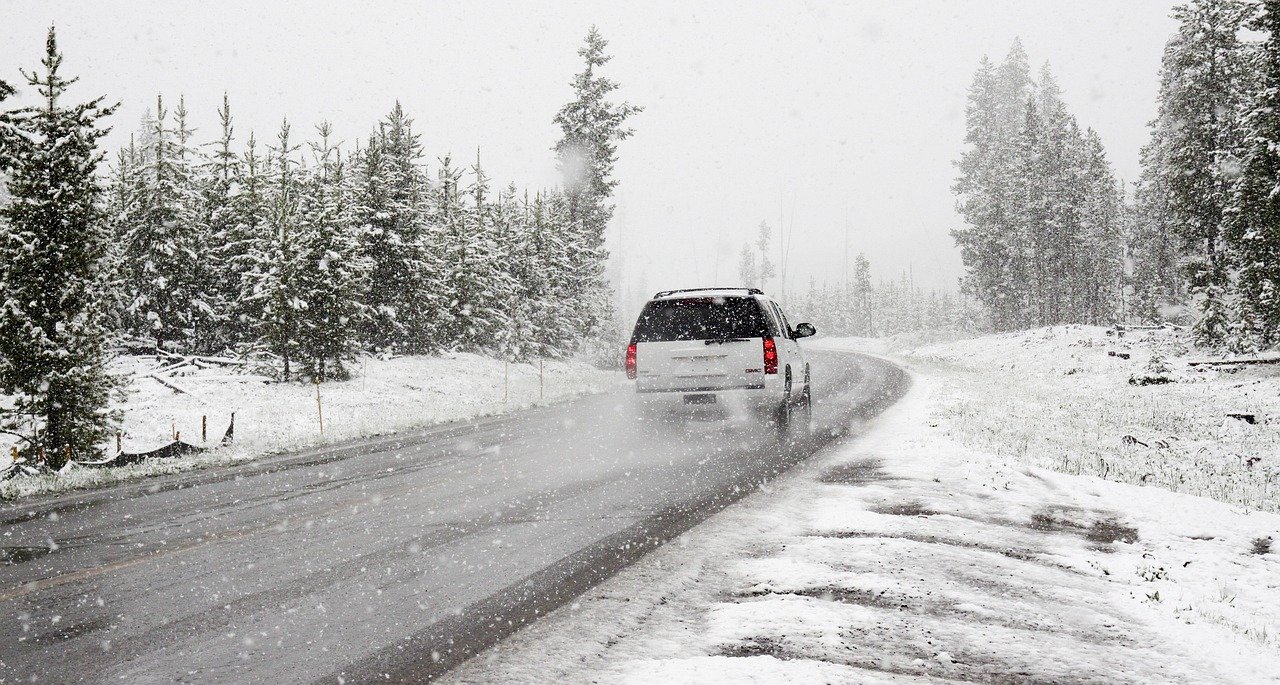
- Vitalii Homon
- January 31, 2022
- Ask Eartha
Dear Eartha, It seems like I-70 closes with every big storm, and I’ve seen some recent horror stories of people getting stuck on the highway for hours. I don’t want to just let my car run, but it gets cold here. What advice do you have for me?
Considerations for your car go well beyond eco-friendliness in Colorado’s High Country. Safety takes center stage and keeping a few things in mind – and on hand – could save your life.
Drive a car with appropriate traction
It should go without saying that anyone living in or visiting Summit County in winter should drive an appropriate vehicle – an all-wheel-drive, four-wheel-drive, or two-wheel-drive with mud and snow-rated tires, all with tires that have at least 3/16-inch tread depth. It is Colorado Traction Law, after all, and anyone caught on Interstate 70 driving any other sort of vehicle in adverse winter conditions could face a steep fine … or a terrible accident.
Check operating components, especially before longer trips
In addition to driving a vehicle that is legal and road-worthy in the winter, you should also run through a checklist on your vehicle before heading out, especially for a long drive. The Colorado Department of Transportation (CDOT) recommends checking your:
- Windshield wiper fluid
- Heater/Defroster
- Wiper Blades
- Radiator/Antifreeze
- Lights
- Fuel level
- Ignition
- Exhaust System
- Tire Tread (at least 3/16-inch)
- Battery
- Brakes
Keep provisions for possible emergencies
You never really know what to expect for trip time when traveling in and out of the county in the winter. Just recently, a closure on Interstate 70 made for a three-hour, two-mile drive between Keystone and Dillon. Earlier this year, a snowstorm in Virginia closed Interstate 95, leaving motorists stranded in the cold for more than 24 hours. Thus, it’s key to keep the necessary provisions with you in your vehicle at all times. According to CDOT, these essential items include:
- Sturdy scraper/snow brush/snow shovel to clear snow
- Flashlight with extra batteries or crank-powered flashlight
- Blanket or sleeping bag
- Gallon jug of water
- First aid kit and essential medications
- Tire chains and tow strap
- Jumper cables
- Flares/reflectors to signal for help and warn other motorists
- Battery or crank-powered radio to listen to emergency broadcasts
- In addition, the less essential items to keep in your car that can certainly make things a lot more comfortable if you’re stuck on the road for any length of time include:
- An extra set of clothes, including coat, hat, mittens, boots, etc.
- Chemical hand warmers
- Non-perishable snacks like granola bars
- A bag of sand for traction
- Deck of cards, book or board game for entertainment
Idling is a wasteful pastime
 Nobody wants to climb inside an ice and snow-encrusted, freezing car. Still, those minutes you spend idling to warm up your car produce a lot of pollution. According to the U.S. Department of Energy, in addition to burning fuel and reducing your vehicle’s fuel economy, idling cars generate a total of 30 million tons of CO2 every year. That’s equivalent to powering 3.6 million homes for an entire year!
Nobody wants to climb inside an ice and snow-encrusted, freezing car. Still, those minutes you spend idling to warm up your car produce a lot of pollution. According to the U.S. Department of Energy, in addition to burning fuel and reducing your vehicle’s fuel economy, idling cars generate a total of 30 million tons of CO2 every year. That’s equivalent to powering 3.6 million homes for an entire year!
The Department also points out that extended idling is unnecessary for modern vehicles and that most manufacturers recommend running newer vehicles for only 30 seconds before driving since engines as well as car interiors warm up more quickly when the vehicle is moving.
This winter and beyond, let’s embrace our thick skins and winter coats. In turn, we can all appreciate clean and crisp mountain air.
